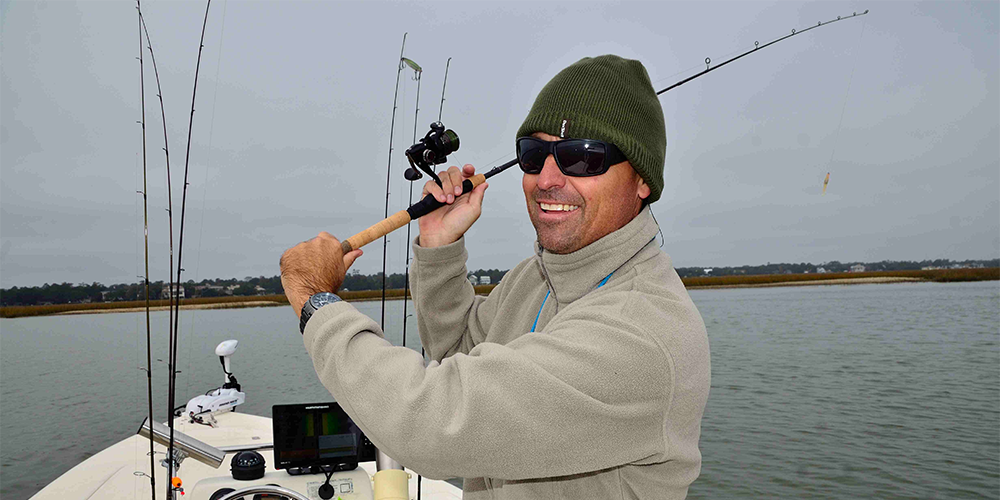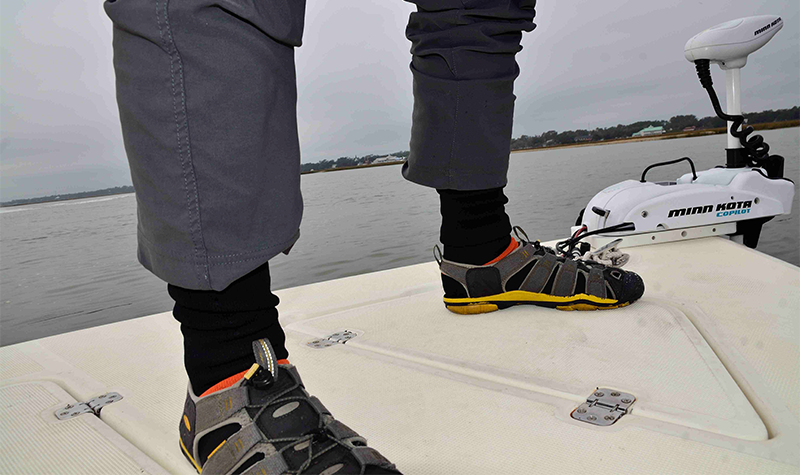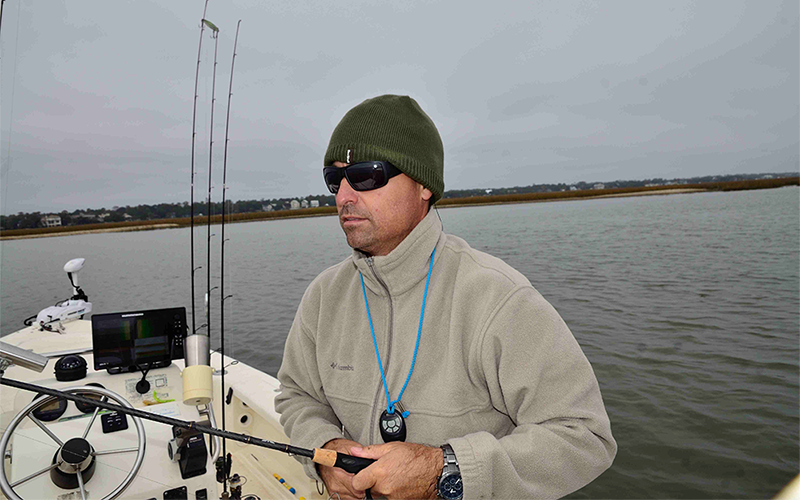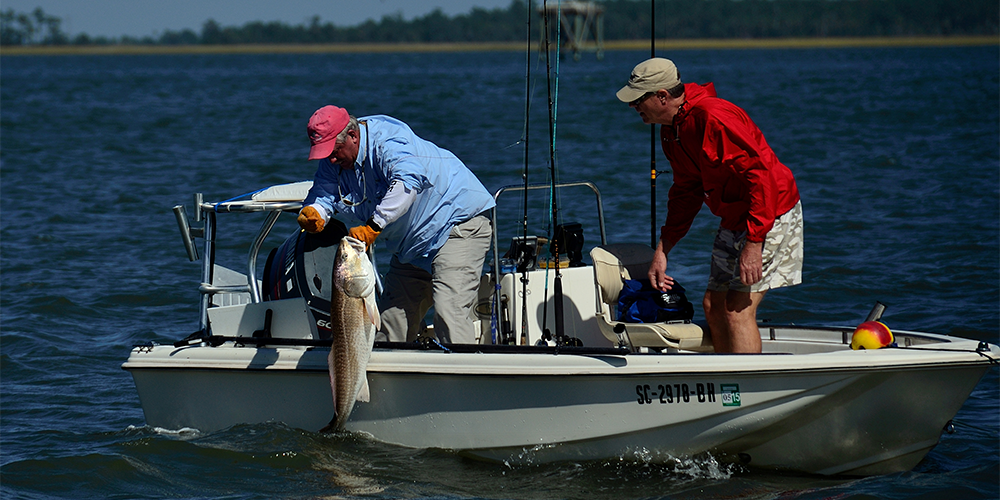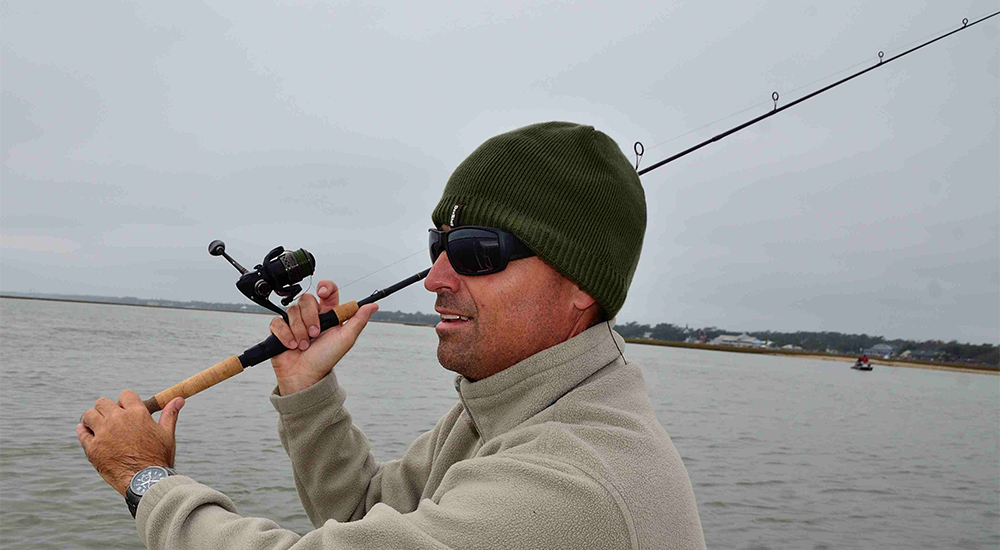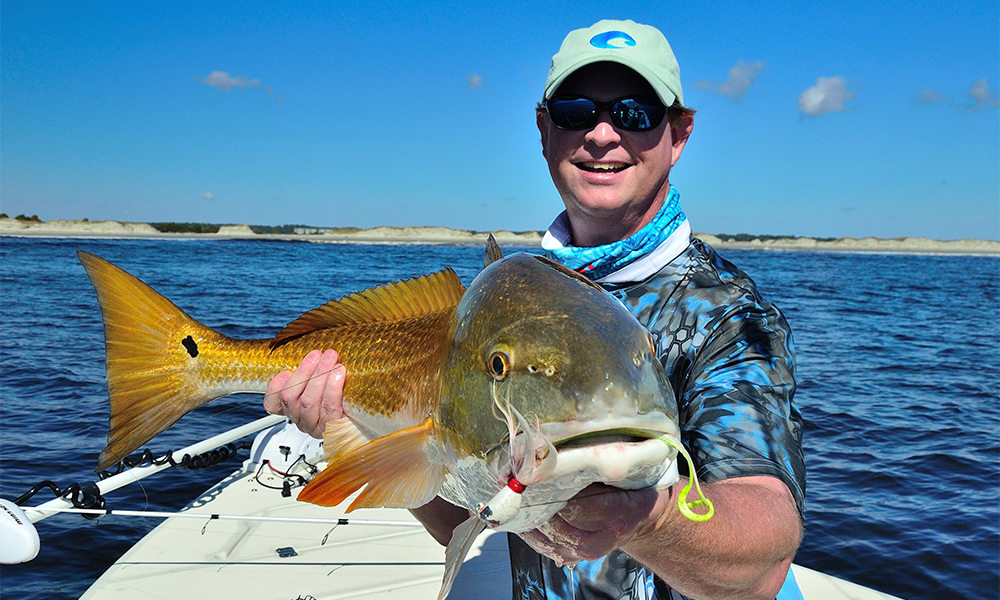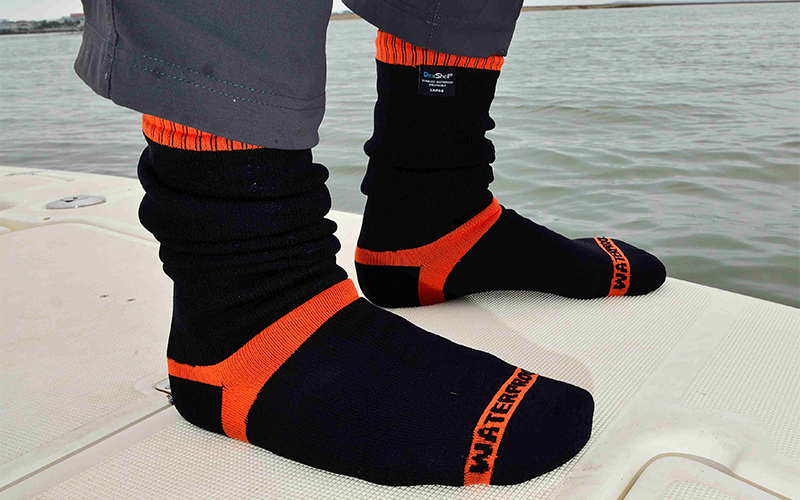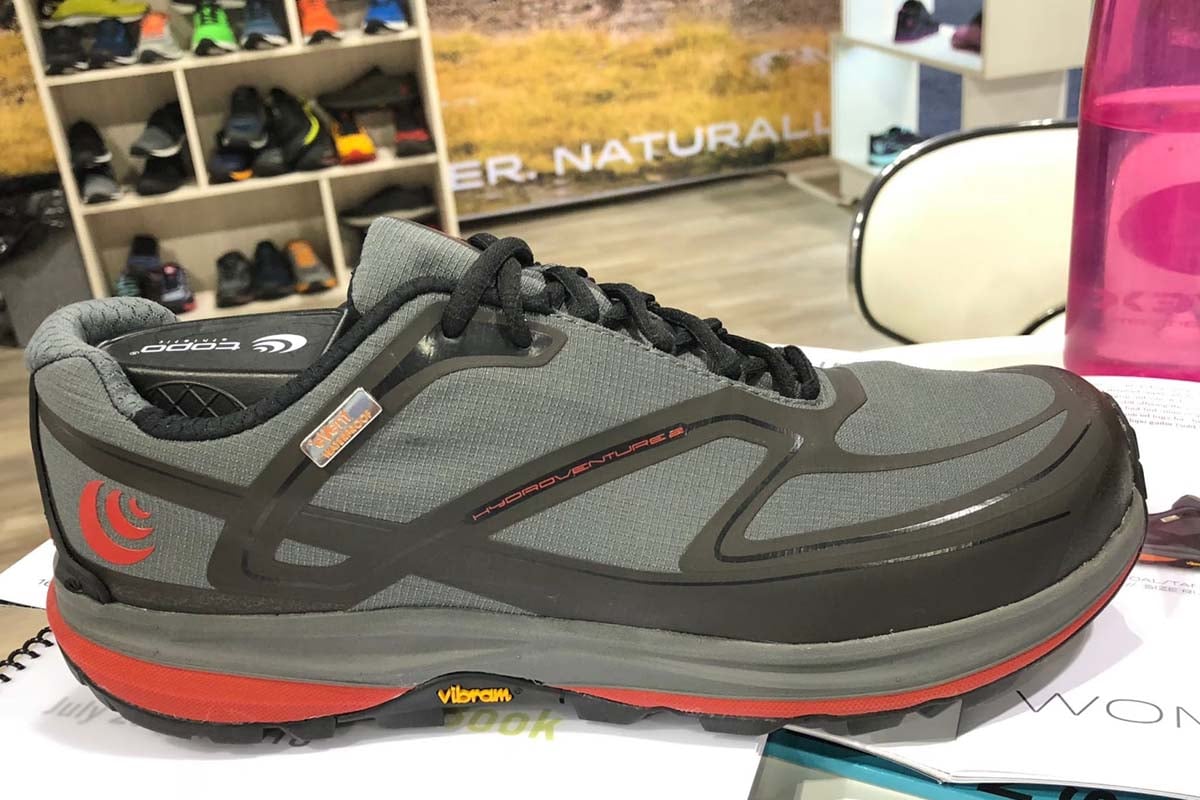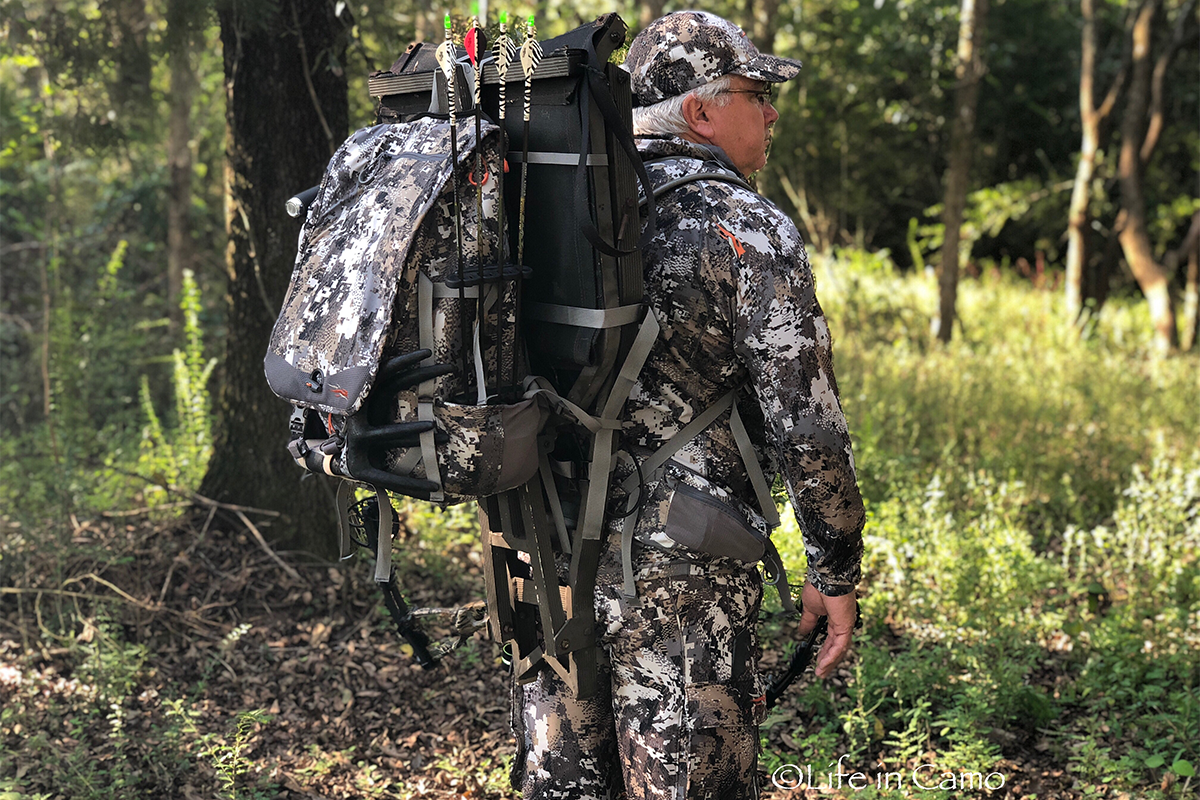Last Updated on
Autumn Brings Best Light Tackle Saltwater Fishing of Year.
One of the best parts of living within the heart of the southeastern U.S. is the change of seasons. The southeastern states receive the best of both worlds with chilly winters, hot summers, and the best time of all – the transitions between the two. Not only do humans feel good during the fall and spring transitions, the fish lurking in the waters below ramp up their feeding schedule and make anglers as happy as a clam. My favorite time to fish is the fall transition along the eastern seaboard where the inshore saltwater angling opportunities rise to epic proportions.
Fall Fishing Tips – Getting Started
Fall fishing takes off when water temperatures drop into the 60’s. The temperature drop triggers panic in baitfish and shrimp sending them out of the estuaries on their annual migration to their wintering grounds.
I live in Myrtle Beach, South Carolina that is located along the North Carolina/South Carolina state line. While the Myrtle Beach area itself is marketed more towards golfers and beachgoers, the estuaries located within a short drive to the north and south of Myrtle Beach proper offer some of the best inshore saltwater fishing in the country.
From the massive Pamlico Sound in North Carolina all the way south to Bull’s Bay just above Charleston, South Carolina, the plethora of waters in-between are prime locations to find several popular inshore fisheries where both surface and subsurface artificial offerings will fill the cooler. It can take day trips to reach these popular waters depending on which areas are producing the best. But, honestly, when the fish begin their fall feed, all of these waters in this region will produce results. I just decide what kind of scenery I want to look at that day.
In these waters, I can target speckled trout near Wrightsville Beach, North Carolina around highly developed waters with docks, marinas, and waterways lined with million dollar houses. Or I can head to the Cape Romain National Wildlife Refuge just above Charleston, South Carolina to target redfish and flounder in the pristine marshes without a house or any other sign of civilization. Fortunately, the fishing in both of these types of habitats can be epic during the fall rally, and anglers can’t really make a bad choice to find a speckled trout or redfish ready to eat.
Basically, the inshore predators need a situation that offers food and a place to ambush food. The highly-developed estuaries will have thousands of docks, miles of bulkheads, and small marina canals that offer prime nursery habitat for baitfish and shrimp, as well as, structure and ambushing opportunities for predator game fish. Additionally, developed areas will have plenty of oysters, barnacles, marsh grass, and other marine substrates to complete the habitat component required for both predator and prey species. The undeveloped areas that lack docks and any signs of human contact will have an expanse of marsh grass, oysters, open bays, and braided creek systems that will also create the perfect habitat scenario for any of the inshore favorites and their prey.
Fall Favorites
Along the east coast, speckled sea trout and redfish are the primary species to chase this time of year and by far my two favorite fishes to target in the salt. Trout and redfish get fired up when the waters cool off. These fishes accelerate their feeding schedules to fatten up for the approaching winter season.
Redfish and trout are inshore game fish that eat about anything smaller than themselves. Shrimp, mullet, menhaden, and any juvenile fish are always on the menu for these popular game fishes. The water temperatures in fall will plummet with passing cold fronts, and the inshore waters see much of these bait choices in evacuation mode. But, this is a good thing for inshore anglers because the exiting bait will get caught in the red zone right where redfish and trout are set up to ambush and fill their bellies.
While redfish and trout will sometimes share a similar ambush position, they will often set up in different types of habitat types. Anglers with an affinity towards one species over the other should head to different types of habitats to satisfy their species hunger.
Weather Triggers Best Action
Unfortunately, the calendar can’t always predict when the fall fishing bonanza will begin. The fish don’t have calendars and they make their move based on the changes in water temperatures. For the best speckled trout and redfish action, the water temperature needs to creep into the 60’s to begin the fall brawl. However, it is not until the water temperatures reach the low 60’s where the fishing action really reaches its peak performance.
During October and November, cold fronts originating from Canada push down cold arctic winds that send water temperatures spiraling. Lowering temperatures triggers a chain reaction beginning with the forage and then the predators fall right in line. And as the water temperatures continue to fall towards the winter season, less bait is available and the trout and redfish become less choosy and they eat about anything they find that resembles something to eat.
Dressing the Part and Keep Extremities Warm
In North and South Carolina, the high humidity of summer can keep anglers sweating profusely or frozen to the bone during cold and windy days of fall and winter. The days of wearing cut off jeans and paper-thin polyester shirts are over this time of year. The invading arctic cold fronts not only cool down the water, but everything else feels the rush of cold air too. In order for anglers to remain comfortable and ready to attack the feeding fishes, they need to be covered and well insulated from the elements.
The greatest source of heat loss when exposed to cold weather is from the head and feet. It is crucial for anglers to wear a hat of some kind during the fall fishing season. While most anglers choose a baseball cap, this type of head protection only offers a limited amount of protection from chilly breezes.
Enter DexShell
DexShell produces outerwear garments that are warm, comfortable, and wind and waterproof. They make gloves, socks, and hats that are all water and wind proof. The hats are soft and super comfortable. And from my personal experience, the Waterproof Beanie Solo does exactly what as advertised.
Last fall and winter, I donned the Waterproof Beanie on my fall and winter fishing trips, as well as, two ski trips to the North Carolina Mountains. The hat was very comfortable and while I didn’t wear it in the rain, the hat blocked the wind very efficiently. Riding in a boat at 40 miles per hour on the way to a fishing spot can get very cold especially when it lasts for 20-30 minutes. Every other hat I have ever worn while fishing allowed a cold breeze to slide in that brought a chill down my spine on cold days, but not DexShell’s waterproof beanie. It kept me warm and dry on cold, wet days in the elements.
The other major source for heat loss is through the feet. I am a lover of sandals and I wear sandals throughout the year even on extremely cold days. But, it can get super uncomfortable when its 40-degrees with sandals on and bare skin showing. I just incorporate my DexShell Hytherm Waterproof Socks or my DexShell Terrain Waterproof socks when it’s cold. Not only will the socks keep my feet warm, they block out the wind. I get the comfort of wearing sandals, but without sacrificing warmth or comfort. And while I don’t fish much in the rain, I often get wet feet in the boat and DexShell waterproof socks keep my feet dry and exceptionally warm all season long. I am going into my second fishing season with DexShell Waterproof socks and I haven’t had any issues with failures at all after dozens of trips to the water and into the washing machine.
